Yale political scientist examines causes & impacts of inequality
Posted: June 27, 2014 Filed under: Uncategorized Leave a comment » The U.S has the highest level of economic inequality of any rich democracy. As we’ve been talking about in our State of Disparity series, Connecticut’s economy is an extreme example of that. WSHU’s Craig LeMoult spoke with Jacob Hacker, the director of the Institution for Social and Policy Studies at Yale University. He’s the author of the book “Winner Take All Politics: How Washington Made the Rich Richer and Turned its Back on the Middle Class.” Hacker spoke about inequality on a national scale.Audio Player
Hacker also spoke with WSHU about economic disparity in Connecticut. He said wealth from Connecticut’s finance industry explains much of the inequality in the state.
Audio Player
The following slides are courtesy of Jacob Hacker and Yale ISPS. Click for a closer look.
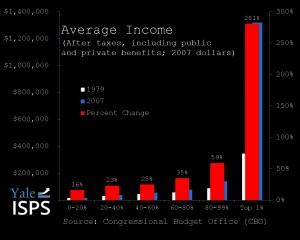
Here’s a detailed breakout of incomes from the top one percent.
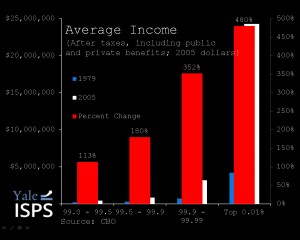
Connecticut ranks last for school breakfasts; economics play a role
Posted: May 27, 2014 Filed under: Education, Nutrition Leave a comment » For the last eight years, Connecticut has ranked last in the nation when it comes to number of schools offering breakfast to students. In the last national report in 2012, less than half of students who received free and reduced lunches in Connecticut ate breakfast at school. There’s a clear economic divide between the schools where breakfast is offered and where it isn’t. The state’s larger, lower-income cities generally offer it, and many of the smaller, wealthier communities do not. Here’s Craig LeMoult’s story about school breakfasts in Connecticut:
For the last eight years, Connecticut has ranked last in the nation when it comes to number of schools offering breakfast to students. In the last national report in 2012, less than half of students who received free and reduced lunches in Connecticut ate breakfast at school. There’s a clear economic divide between the schools where breakfast is offered and where it isn’t. The state’s larger, lower-income cities generally offer it, and many of the smaller, wealthier communities do not. Here’s Craig LeMoult’s story about school breakfasts in Connecticut:
Audio Player
This interactive map by the Connecticut State Data Center illustrates the number of school breakfasts served in each school district, compared to the number of students receiving free or reduced-price school breakfast. Towns with more “free & reduced” kids and fewer breakfasts are red.
New Conn. high school graduation rates show continuing economic gap; some progress
Posted: May 14, 2014 Filed under: Education Leave a comment »
The Connecticut Department of Education released new statistics on Wednesday showing an improvement in the percentage of students who graduate in four years, and a slight reduction in the gap based on the economic background of students.
In 2013, 68.6 percent of students who are eligible for a free lunch (the standard way of assessing poverty in schools) graduated in four years. In 2012, that percentage was slightly lower, at about 66 percent. For those who get a reduced-price lunch in 2013, 84.2 percent graduated in four years. Compare that to the percentage for kids whose families make enough money that they don’t qualify for any lunch assistance: 93.3%.
Last year’s numbers were released in August, and were featured here in State of Disparity.
Here’s an interactive map by the Connecticut State Data Center, illustrating graduation rates in each Connecticut school district.
Since 2010, the graduation gap between economically disadvantaged students and their more affluent peers reduced by 4.5 percentage points (17.5 percent).
The DOE has set aside the 30 lowest performing school districts in a designation called “Alliance Districts” that are getting additional funding. Those districts saw a 1.3 percent increase over 2012. Of those, the 10 lowest performing saw a 2.8 percentage-point increase — from 66.3 percent in 2012 to 69.1 percent in 2013.
Four-year graduation rates by district and school are available at the following links: District, School
Of course, if a student doesn’t graduate in four years, it doesn’t necessarily mean they won’t graduate at all (as we saw in this story). So the DOE also released, for the first time, the percentage of students who graduate in five years.
Looking at all students who entered Grade 9 in September 2008 (so they ordinarily would have graduated in 2012) the five-year graduate rate is 87.5 percent – 2.7 percentage points higher than the cohort’s four-year rate. For kids who are
eligible for free or reduced-price lunch, adding that extra year brings up the graduation rate 5.3 percentage points.
Five-year cohort graduation rates by district and school are available at the following links: District, School
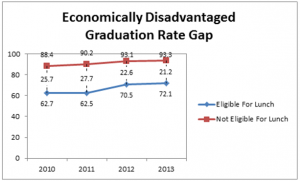
This graph from the Conn. Department of Education shows a continuing significant gap in graduation rates between students who qualify for free or reduced-price lunch, and those that don’t. Although the state points out the gap decreased from a 25.7 percentage-point difference in 2010 to a 21.2 percentage-point difference in 2013 for a total reduction of 4.5 points.
There are persistent racial gaps in grad rates, too. In 2013, about 91 percent of white students graduated in four years, while about 76 percent of black students and 70 percent of Hispanic students graduated in the same time.
Listen to Ebong Udoma’s story here:
Audio Player
VmP
New Haven starts removing controversial fence between public housing and neighboring Hamden
Posted: May 13, 2014 Filed under: Housing, Income, Politics Leave a comment »
New Haven began demolishing a fence on Monday that for 50 years separated a public housing complex in the city from the town of Hamden. For some, the fence had become a symbol of racial and economic division between two communities. The economic dividing line here is actually not one of the starkest in a state with one of the widest income disparities in the country. The most recent Census figures show median family income on the New Haven side was around $33,000, and it was about $70,000 on the Hamden side. But few places have anything as symbolically and literally divisive as the fence.
Listen to Craig LeMoult’s story here:
Audio PlayerVmP
A disparity of justice explored in Taibbi’s new book
Posted: May 8, 2014 Filed under: Justice Leave a comment »
 In his new book, “The Divide: American Injustice in the Age of the Wealth Gap,” journalist Matt Taibbi looks at the disparity in how the U.S. justice system treats wealthy people and poor people.
In his new book, “The Divide: American Injustice in the Age of the Wealth Gap,” journalist Matt Taibbi looks at the disparity in how the U.S. justice system treats wealthy people and poor people.
“It’s incredibly easy for people who don’t have money to go to jail for just about anything,” Taibbi told NPR’s Kelly McEvers in April.
“There’s almost an inverse relationship between the ease with which you can put a poor person in jail for, say, welfare fraud, and the difficulty that prosecutors face when they try to put someone from a too-big-to-fail bank in jail for a more serious kind of fraud.”
Here’s Taibbi’s interview with NPR’s Kelly McEvers.
Taibbi uses the example of HSBC, which admitted to washing over $850 million for a pair of Central and South American drug cartels. The bank paid a fine, and no one served a day in jail. He compares that to people who go to jail for having a joint in their pocket.
“I think there’s this weird psychological thing that we’re developing where we just sort of look at one kind of offender and we think that person is appropriate for jail, and another kind of offender we just don’t think that person is appropriate for jail, increasingly,” Taibbi told McEvers.
You can read an excerpt of the book here.
Taibbi was interviewed on the Daily Show in April. Here’s the first part of that interview.
Here’s the second part of Matt Taibbi’s interview on the Daily Show
Online tool to help find better Section 8 housing wins contest
Posted: April 30, 2014 Filed under: Housing Leave a comment »
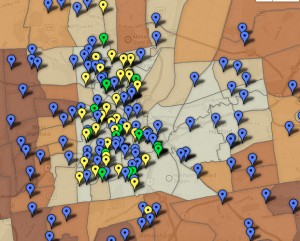
An online map will show people looking for Section 8 housing where community resources are. It’s at http://ctoca.org/map/
A Connecticut civil rights organization won an innovation contest on Tuesday for developing a tool to help low-income residents move to better neighborhoods. The Open Communities Alliance won a “hackathon” competition at a conference on economic inequality, hosted by the online news source the Connecticut Mirror. The tool helps counselors who work with people seeking government-subsidized Section 8 housing. So-called “mobility counselors” in Waterbury, Hartford and New Haven advise people on where to find suitable homes. Erin Boggs is the Executive Director of Open Communities Alliance.
“What we did today was we tried to create a mapping tool, where we would have a system where the clients and the counselors could sit together, enter the address and get information about neighborhood assets,” said Boggs.
Those neighborhood assets include things like schools and grocery stores, and the tool also has community information like unemployment rates and crime statistics. Boggs says that kind of information can help families move to communities where they can be more successful. She says currently, nearly 80 percent of Section 8 vouchers are disproportionately used in high poverty areas.
For now, the tool focuses on the Hartford area. An award of $1,000 in Tuesday’s contest will help them extend it to cover the entire state.
City mayors describe inequality with suburbs
Posted: April 30, 2014 Filed under: Housing, Income, Politics Leave a comment »
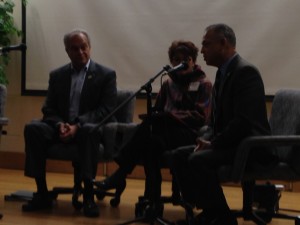
(L to R) Former New Haven Mayor John DeStefano, Norwich Mayor Deb Hinchey, Harford Mayor Pedro Segarra
Two mayors of Connecticut cities and one former mayor commiserated on Tuesday about the economic disadvantages of the state’s urban areas. They spoke at a conference focused on economic inequality in the state, sponsored by the online news outlet the Connecticut Mirror.
Audio PlayerVmP
Hartford Mayor Pedro Segarra said for the most part, Connecticut is a liberal state.
“I just think that when it comes to protecting people’s wallets, we’re a lot more conservative.”
Segarra said the fiscally conservative suburban towns aren’t willing to step in to help the state’s larger cities. Former New Haven mayor John DeStefano said Connecticut’s three biggest cities have nearly three quarters of the state’s affordable housing stock.
“The choices made 100 years ago and the choices that many of the communities of CT continue to make about who they zone out, has resulted in a separating of populations and concentrations of poverty and wealth in the state.”
That poverty is also concentrated in some of Connecticut’s smaller cities, like Norwich. Norwich Mayor Deb Hinchey, said the cities all wind up fighting for a finite amount of money.
“And where I become concerned about the inequalities is where that finite group of dollars isn’t disbursed evenly throughout the state.”
Hinchey said the state needs to reform its tax laws to be more fair. DeStefano, who retired last year after 10 terms in office, laughed at that, and said he could tell she’s new to the job.
DeStefano said cities in Connecticut need to take action to reduce their own economic inequality, rather than waiting for the state to take steps. Segarra challenged DeStefano on that, suggesting Hartford has a harder time making changes to impact the economic health of the city. Here’s their exchange.
Audio Player
VmP
Segarra said his administration is working on building housing to attract those higher-income people to live in Hartford. In New Haven, DeStefano provided incentives for Yale University employees to live in the city. Yale is the city’s largest employer, and provides more than $15 million a year in payments to support city services.
Inequality is front & center at SOTU
Posted: January 29, 2014 Filed under: Uncategorized Leave a comment »
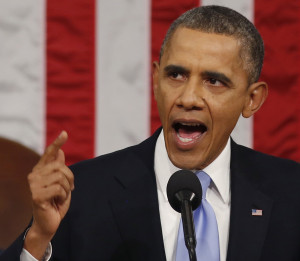
President Barack Obama delivers the State of Union address before a joint session of Congress in the House chamber Tuesday, Jan. 28, 2014, in Washington. (AP Photo/Larry Downing, Pool)
President Obama’s fifth State of the Union address and the Republican and Tea Party responses seemed to agree on one point. They all said that inequality is a problem in this country. What that means, and what to do about it is another story.
In his address, President Obama said:
“Today, after four years of economic growth, corporate profits and stock prices have rarely been higher, and those at the top have never done better. But average wages have barely budged. Inequality has deepened. Upward mobility has stalled. The cold, hard fact is that even in the midst of recovery, too many Americans are working more than ever just to get by – let alone get ahead. And too many still aren’t working at all. Our job is to reverse these trends. It won’t happen right away, and we won’t agree on everything. But what I offer tonight is a set of concrete, practical proposals to speed up growth, strengthen the middle class, and build new ladders of opportunity into the middle class.”
Those proposals included most notably an increase in the minimum wage. “Americans understand that some people will earn more than others,” he said. “And we don’t resent those who, by virtue of their efforts, achieve incredible success. But Americans overwhelmingly agree that no one who works full time should ever have to raise a family in poverty.”
The President also called for expanded pre-K and broadband access, among other proposals.
You can read a full transcript of the speech here, watch video of it here and listen to Mara Liasson’s report on NPR’s Morning Edition here:
“The President talks a lot about income inequality,” she said. “But the real gap we face today is one of opportunity inequality. And with this Administration’s policies, that gap has become far too wide.”
McMorris described families who can’t find full-time work, can’t afford college educations, and who are out-living their life savings.
“Last month, more Americans stopped looking for a job than found one. Too many people are falling further and further behind because, right now, the President’s policies are making people’s lives harder.”
She described, in general terms, Republican plans to grow jobs, improve education, and reform immigration. You can watch her response here.
In his response for the Tea Party, Sen. Mike Lee of Utah tackled inequality – and the President’s position on the issue – more directly.
“We are facing an inequality crisis – one to which the President has paid lip-service, but seems uninterested in truly confronting or correcting,” said Lee. He said the inequality crisis present itself in three forms:
“Immobility among the poor, who are being trapped in poverty by big-government programs; insecurity in the middle class, where families are struggling just to get by and can’t seem to get ahead; and cronyist privilege at the top, where political and economic insiders twist the immense power of the federal government to profit at the expense of everyone else.”
He went on to say the Obama administration “continues to leave poor and middle-class families further behind, while he and his allies insist that the real problem is ‘inequality’ itself.” Lee criticized Obama on a range of issues he said leads to inequality, and specifically targeted the Affordable Care Act (Obamacare), calling it an “inequality Godzilla that has robbed working families of their insurance, their doctors, their wages and their jobs.”
Watch Sen. Lee’s full Tea Party response to the State of the Union here.
What do you think of the fact that inequality has become the focus of national leaders on both sides of the political spectrum? Is the issue more about income or opportunity? Did anything President Obama, Rep. McMorris or Sen. Lee resonate as a potential solution to the problem? Or is inequality actually a problem in the U.S.? Let us know what you think!
“The Undercover Economist” on the definition of poverty, and why we should care about inequality
Posted: January 13, 2014 Filed under: Income Leave a comment »
Financial writer Tim Harford spoke with NPR’s David Greene today on Morning Edition about what poverty means now. Harford is the author of the new book The Undercover Economist Strikes Back.
Harford points out the definition of the poverty line is based on the cost of food needs over 50 years ago. While the calculation today reflects an increase in the price of food, it doesn’t include other common expenses today, like a cell phone and other bills.
“This goes back to Adam Smith writing in the late 18th century. Smith said that a man would be ashamed to appear in public without a linen shirt. And then he pointed out that the Greeks and the Romans — even the emperors — didn’t have linen shirts. His point is that poverty is partly about not having enough money to buy what society expects you to have. If you don’t have enough money to meet those social expectations, people will think of you as poor and you will think of yourself as poor. That’s not to say that poverty is totally relative, but it is saying it’s subjective — it’s a social condition. And he’s got to be right in some fundamental way about that.
“It’s about more than survival. It’s also about: Can you participate in social conversations. Are you ashamed to be seen in public or not? There is some controversy about whether that sort of thing should count for the poverty line or not.”
Harford said considering income inequality is “very contested, because there are just so many ways to think about it.”
“Are you comparing the very richest to the very poorest? Are you looking at the assets that people have? Are you just looking at their income? What we can be reasonably confident of saying is that inequality has been rising.”
So why should we care?
“Whether inequality really damages a country as a whole is less clear. I think the main argument that it’s a problem is that it starts to corrode your political system. You get fewer and fewer people with more and more money who are able to have a disproportionate influence on political priorities through their campaigning, their lobbying, their political donations. And if that happens then you’re moving further and further away from the ideals of a democracy.”
You can hear the full interview with Tim Harford here.
Food insecurity in Fairfield County
Posted: November 26, 2013 Filed under: General, Nutrition Leave a comment »
The Fairfield County Community Foundation released a report on food insecurity in the county, describing the trouble that many across the county face finding their next meal,
The report says most of the region’s food insecurity is still in the cities, but increasingly, families in suburban areas are having difficulty getting meals. Nancy von Euler of the Foundation says those families often don’t know about the resources available to them, like food banks and federal assistance. According to the report, 38% of Fairfield County families who are eligible to get federal food assistance don’t get the help. von Euler says part of the problem is that Fairfield County has among the highest costs of living in the country.
“So we have one of the highest food costs, per-meal cost of anywhere in the nation. Our housing costs are very high, our transportation costs are very high, our healthcare costs are very high,” says von Eueler. “And all of those things compound to put people at risk of not being able to have enough money to meet their food needs.”
The report says nearly 35,000 children in Fairfield County live in food insecure households, yet the state is last in the country for participation in the federal school breakfast program.


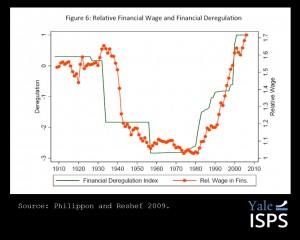

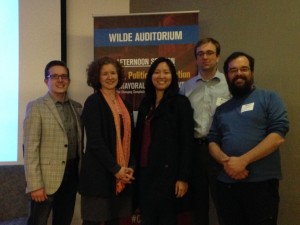
Recent Comments